- Home
- Jeremy Robinson
Helios (Cerberus Group Book 2) Page 27
Helios (Cerberus Group Book 2) Read online
Page 27
Fiona caught on. “They knew the Mother Tongue.”
Gallo gave a knowing nod. “It’s possible. They were descended from an earlier tribe called the Anakim—sons of Anak. The Hebrews encountered them on the edge of the Promised Land. The ancient Greek word Anax, from which Anak is probably derived, is used to indicate royalty but also divine power. Both the Rephaim and the Anakim are associated with ancient ancestors living in the sheol, the Hebrew word for the pit or underworld. And here we come full circle, the Rephaim were descendants of the Nephilim.”
“And the Sacred cubit was their measurement,” Pierce said. “There was zero chance of the Templars figuring that out. To find the precise location where Jeremiah concealed the Ark, they would have needed to know the exact length of the Sacred cubit, and that’s a calculation they were able to make from something they found on the Temple Mount.”
“That makes sense,” Gallo said, “but how does it tell us where the Ark went after they found it?”
Pierce answered with a question. “How do we know the length of the Sacred cubit?”
“Cintia told us,” Fiona said.
“And I learned about it from the writings of Sir Isaac Newton,” Dourado put in.
“So, how did Newton figure it out?”
As Fiona and Gallo exchanged a look, Dourado answered. “According to the paper he wrote, it was by researching ancient writings.”
“That’s one possible answer,” Pierce said, grinning. “But how did he arrive at the correct figure, when all those earlier scholars couldn’t get it right? And remember, there was no uniform standard of measurement until the reign of Queen Elizabeth, no way to communicate what those distances meant.”
Gallo grasped what he was trying to say. “You think Isaac Newton got his measurements from the Ark?”
“It’s the perfect standard of measurement. The Bible gives the exact dimensions of the Ark in cubits. Newton’s calculation was the basis for his theories on light, and probably everything else, too. He invented calculus just so he could understand the significance of the Sacred cubit, and that opened his eyes to the laws of gravity and motion. The Sacred cubit was the key to unlocking all of that because it came from the Originators…” He smiled at Gallo. “…aka, the Nephilim, a technologically advanced alie—err, species.”
“‘If I have seen further than others,’” Gallo murmured, reciting one of Newton’s most enduring quotes. “‘It is by standing upon the shoulders of giants.’ He wasn’t just talking about intellectual giants, was he?”
She blew out her breath with a low whistle. “Well, it’s not the craziest thing I’ve heard today. Connect the dots for me. How do we get from the Templars to Sir Isaac Newton?”
“I don’t have it all worked out,” Pierce admitted. “Cintia, maybe you can fact-check me on some of this. But here’s what I think happened: The Templars found the Ark and held on to it for a couple of centuries, believing that they would one day be able to rebuild Solomon’s Temple in Jerusalem. When they learned of King Philip’s plot against them, the Ark was the one secret they had to keep, so they confessed to the wildest crimes imaginable and spun tales of treasure ships, all to hide the one thing that was more important to them than their reputation or even their lives. They went underground, just like all the conspiracy theories say, creating secret societies that would protect the Ark and preserve the wisdom and knowledge of the Templars through the ages.”
“Kind of like us?” Fiona mused.
“Except they were holding off until all those old prophecies about the Jews returning to Mount Zion and rebuilding the Temple came true. They hid their secrets in rituals and stories. Only the highest level initiates would ever know the whole truth.”
“You’re talking about the Freemasons,” Gallo said. “Was Newton a Mason?”
“Let me check,” Dourado said. “Okay, it looks like the first lodge in London opened in 1717, ten years before Newton died… Oh.”
“Oh?” Pierce prompted.
“I’m sending you a picture. It’s the seal of the London Grand Lodge.”
The phone buzzed as the image came via text message. Pierce tapped on the screen to open the file.
“Is that…?” Gallo started.
“I think so.” Pierce zoomed in on the feature of the seal that he suspected had caught everyone’s attention.
“That’s the Ark!” Fiona said.
“It makes sense,” Pierce explained. “The Masons see themselves as the spiritual heirs to Hiram, the architect of Solomon’s temple, where the Ark of the Covenant was kept. The Ark and anything related to the Temple is of paramount importance, symbolically at least.”
“Maybe the chicken came before the egg,” Fiona suggested. “Maybe they got interested in this stuff because Isaac Newton asked them to protect the Ark.”
“It’s not that crazy,” Pierce admitted. “And a lot of Masons consider Newton to be an influence, if not a member. What we do know for certain is that Newton was an early member and president of the Royal Society.”
“More secret brotherhoods,” Fiona said, rolling her eyes.
“The Royal Society isn’t a secret,” Pierce said. “It’s the world’s oldest and most esteemed scientific organization.”
“The Royal Society was founded in 1660,” Dourado said, summarizing the result of another Internet search. “But it traces back to an earlier group of scientists who called themselves ‘the Invisible College.’ The idea for the Invisible College came from a reference to ‘Salomon’s House’ in the book New Atlantis, by Sir Francis Bacon. It was an early blueprint for a research institute.”
“Once again, life imitates art,” Gallo said. “And who better to take as a namesake than King Solomon, the wisest man ever to have lived?”
“Solomon’s House might also refer to the Temple,” Pierce added.
“You might be right about that,” Dourado said. “Bacon was known to be a student of Templar lore. He was also involved in creating the King James Version of the Bible, and he consulted with Dr. John Dee on the creation of the statute measurement system.”
“Isn’t he also the guy that wrote the Voynich Manuscript?” Fiona asked.
“You’re thinking of Roger Bacon,” Pierce said. “No relation.”
She grinned. “Other than crispy deliciousness.”
Pierce shook his head in a display of dismay, and then turned to Gallo. “There’s your connection. The Templars relocated the Ark to London. France wasn’t safe for them anymore. The Templars already had a strong presence in England, and King Edward sheltered them from the worst of the persecution. England and France were constantly at war, and Edward wasn’t about to do Philip any favors. What better place to hide a secret Templar revival?
“Eventually, Edward was forced to comply with the wishes of the Church, and all Templar holdings were given to the Hospitallers, but they had plenty of time to cover their tracks. And when Henry VIII broke with Rome, he kicked the Hospitallers out as well. Which brings us to Sir Francis Bacon, the Royal Society, and to Isaac Newton.
“Newton was as much a man of faith as he was a man of science, but his discoveries were part of the Scientific Revolution, the Enlightenment, and the beginning of the end for universal acceptance of a divine origin for the Universe. I would guess that, as intellectual philosophies gained greater acceptance, the idea of holding onto religious relics like the Ark would have seemed a bit quaint. That probably contributed to the creation of the Masonic brotherhood, a way for men of faith and science to square the circle. Some of the Founding Fathers were both Masons and Deists—hybrid theistic rationalists. Just having the Ark would be an anchor for their spiritual beliefs.”
“Dots connected,” Gallo said. “Which just leaves one question. Where’s the Ark today? You said you knew where it was.”
“What’s the first rule of real estate?” Pierce asked. “Location, location, location. The Temple Mount was chosen for a specific reason, an alignment of geomagnetic forces that even
Solomon probably didn’t understand, but was somehow connected to the Originator power grid. The cave where Jeremiah hid the Ark was calculated using the Sacred cubit and the location of the Temple. I would be willing to bet that the Templars used a similar calculation when deciding where to hide the Ark in London. A sacred place they would have identified right from the beginning: Temple Church.”
“Of course,” Dourado exclaimed. “It was in The DaVinci Code! I can’t believe I forgot that.”
Pierce winced at the reference but refrained from commenting.
Temple Church was, as its name indicated, a Church built by the Templars. The site, chosen by the first Templar Grandmaster, Hugues de Payens, was already sacred ground, albeit in a pagan tradition, having once been the location of a Roman temple in the ancient city of Londinium. The church itself was round, rather than cruciform, an architectural signature of Templar churches, just like the chapel Pierce and Fiona had discovered beneath Mount Nebo. The Templars had outgrown Temple Church, and built a city in Hertfordshire to the north of London, but Temple Church continued to serve an important role in Templar operations as the English royal treasury.
Even on a good day, getting to Temple Church was a bit of a challenge, requiring a local’s knowledge of the narrow pedestrian throughways and back streets. At midnight on the day following the biggest disaster to hit the city since the Ragnarok Event, it was an ordeal comparable to escaping the subterranean world beneath Arkaim. Although London had suffered only minor earthquake damage, the subsequent nine-foot-high tsunami wave had flooded low-lying areas near the river as far inland as Battersea Bridge. The affected area included the Temple district, where Temple Church was located. The church itself was high and dry, but everything south of the Strand was barricaded off to vehicle traffic, and despite Dourado’s best efforts to find them a route, it took forty minutes of wandering to find an approach.
“Reminds me of Castel Sant’Angelo,” Fiona remarked, as they crouched in the shadows, checking to make sure the coast was clear.
“You’re not the first to notice that,” Pierce said. Indeed, the rugged church bore more than a passing resemblance to the papal fortress and one-time prison structure that concealed the entrance to the Cerberus Group’s underground headquarters. “It’s the round design. Most churches are cross-shaped, but Templar churches were always round, like the Church of the Holy Sepulchre in Jerusalem.”
They remained in hiding for a few more minutes before making the final push to the entrance on the south side of the church. The locked door posed no great challenge to Fiona, who was almost as adept at picking locks as she was at creating golems, and they slipped into the deserted nave.
Pierce swept the surrounding area with his light. The round nave to their left contained the stone burial effigies for which the church had become famous. To the right was the more traditionally Gothic choir and chancel.
“Now what?” Fiona whispered.
Pierce had hoped that the proximity of the Ark would trigger some kind of reaction to which Fiona would be attuned, but that wasn’t happening. He felt guilty asking her, yet again, if she sensed anything. Scanning with ground penetrating radar was also out of the question. He had no intention of going back to the snake pit underneath Mount Nebo to retrieve the lost Groundshark unit.
“We’re going to have to do this the old-fashioned way,” Pierce said. “Look everywhere.”
“For what?” said Gallo.
“A secret door. The entrance to an underground crypt.”
“There isn’t a crypt,” Dourado said, her voice audible only through the synced Bluetooth devices they were all using.
“This church used to be the Royal Treasury. There has to be more than meets the eye here.”
Gallo cast a dubious eye into the nave. “I’m sure we’re not the first visitors to come in here rapping on the walls hoping to find some hidden Templar secret.”
“Well, we’re just going to have to look in the one place they didn’t. Cintia, try to dig up whatever information you can on this place. Maybe there’s some old blueprints or something in the historical record that might steer us in the right direction. The older, the better.”
“On it.”
As the three of them fanned out, moving to different corners of the church looking for some irregularity that might hint at the location of a hidden passage, Dourado began recounting details from the historical record. Most of the early information focused more on the Templars and the disposition of the property once they were gone, but after the Great Fire of 1666, history began paying attention to the building itself.
“The fire was put out, right outside Temple Church,” Dourado said. “What’s kind of unusual is that, even though the Church wasn’t damaged in the fire and even though he had thirty other churches to rebuild, the architect, Sir Christopher Wren, decided to refurbish Temple Church anyway.”
“Christopher Wren,” Pierce said. “He was also a President of the Royal Society.”
“Yes, about twenty years before Sir Isaac Newton. He was close friends with Edmund Halley, and it was a discussion they had that prompted Newton to develop his calculations to explain orbital mechanics. And like Newton, Wren is often linked to the Freemasons, though it’s hard to say if he was actually a member of the brotherhood.”
“What kind of changes did Wren make?”
“Mostly to the interior. The altar backpiece is his design.”
Pierce turned and shone his light toward the far end of the chancel, illuminating a series of carved wooden panels—the official term for it was a reredo—which displayed the Ten Commandments and the Lord’s prayer.
“Wren’s modifications were controversial,” Dourado continued, “and in 1841, most of them were undone in an attempt to make the church look more authentic. During the Blitz, a firebomb destroyed the roof and the organ, so they had to renovate again after the war. Wren’s altar was taken out of mothballs and reinstalled.”
“So, anything Wren might have done back in the seventeenth century,” Gallo said, “would have been exposed during the Victorian renovation or the restoration after the War.”
“Unless the architects were in on it.” Pierce moved back into the nave. He played his light on the stone figures arranged on the floor and positioned behind ankle-high iron rails. “Cintia, what was that you said about the crypt?”
“That there isn’t one. When they repaired the damage from the German bombing, they found no evidence of burials or a crypt under the Church. That’s how we know the stone knights in the nave are just effigies and not actual tomb markers.”
“What else do we know about these effigies?”
“There are nine effigies and what appears to be a stone casket cover in the spot where a tenth effigy would have gone. Five of them are attributed to actual people, the other four are unknown. The effigies were damaged by the bombing, but there are casts of them taken from before the war in the Victoria and Albert Museum.”
Pierce noted that all but two of the carved figures had their legs crossed, which was a common burial tradition for Crusader knights. “Which ones belonged to Templars?”
“None of them. At least, not the five that have been identified. They were supporters of the order but they never took the vows.”
Pierce examined each effigy in turn, taking note of their layout. Eight of the effigies were located within the inner circle of pillars supporting the ceiling vault, four on each side, arranged in a two-by-two formation. The heads were pointing west, feet positioned toward east, in the direction of the choir, with just enough space between each to create a cross. Further out, on either side, were the last two markers, including the one that lacked an effigy.
He returned to the center, turning slowly, looking for the pattern. “Why does this look familiar?”
Then he saw it and barked a laugh. Fiona came around to stand beside him. “What are you seeing?”
“We’re standing in a circle,” he said, raising his arms and turning ar
ound. “A circle. Keep that image in your head.”
He moved outside the inner circle, to the back of the nave and stood looking across the four effigies to the north, with one arm raised, pointing east. “Now. Imagine a straight line passing right through there.” After allowing a moment for this to sink in, he moved a few steps to the right and did the same over the effigies to the south.
A circle overlaying parallel lines.
The sigil of Hercules.
“The Herculean Society,” Gallo murmured.
“Coincidence?” Fiona asked.
George shrugged. “Could be.”
But even as she said it, a loud scraping sound filled the nave, reverberating between the ceiling arches like a sustained musical note. Pierce turned toward the source of the noise and saw the tenth marker, the one without a knight, sinking into the floor.
FIFTY
Pierce glanced at Fiona. She shook her head. Something had triggered the secret trap door, but it wasn’t anything she had done. She crept past the effigies and shone her light into the narrow opening. Only part of the casket cover was still visible. After dropping a few feet, it had slid to the side, revealing a narrow flight of stone steps, facing west as they descended into nothingness.
“Somebody knows we’re here,” Gallo said. “So, do we go down the rabbit hole?”
“The Ark is down there,” Pierce replied. “I don’t think we have a choice.”
He took a tentative step into the revealed passage, then another. When his head dipped below the level of the floor, Gallo gestured for Fiona to go next.
The opening was narrow, forcing her to turn sideways to get her shoulders through. The air rising up from below was cool and damp, and a musty smell filled her nostrils. The floor at the bottom of the steps glistened with moisture, but the passage beyond was not flooded. Pierce was already moving down the tunnel, and she hastened to catch up to him.

 Alter
Alter From Above - A Novella
From Above - A Novella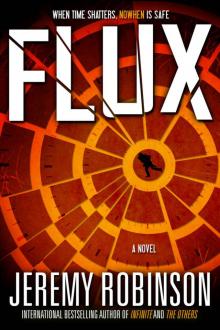 Flux
Flux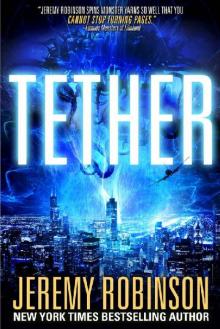 Tether
Tether Exo-Hunter
Exo-Hunter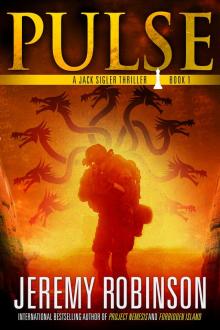 Pulse
Pulse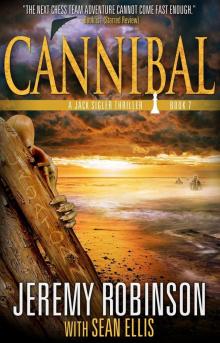 Cannibal
Cannibal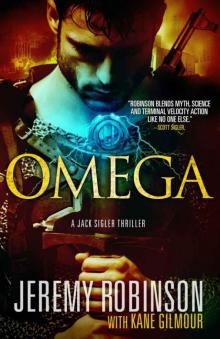 Omega: A Jack Sigler Thriller cta-5
Omega: A Jack Sigler Thriller cta-5 Flood Rising (A Jenna Flood Thriller)
Flood Rising (A Jenna Flood Thriller)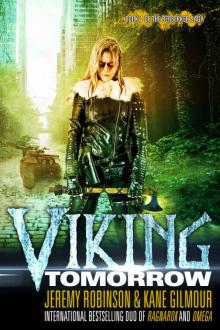 Viking Tomorrow
Viking Tomorrow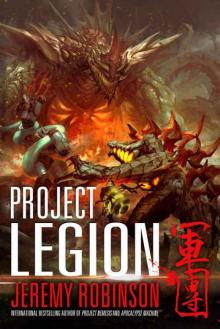 Project Legion (Nemesis Saga Book 5)
Project Legion (Nemesis Saga Book 5) BENEATH - A Novel
BENEATH - A Novel Kronos
Kronos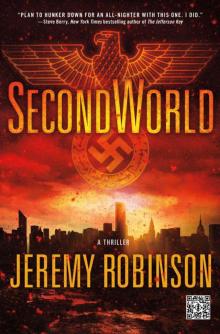 SecondWorld
SecondWorld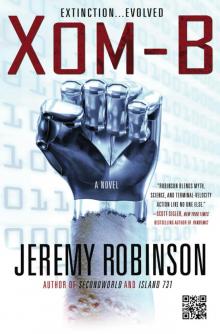 XOM-B
XOM-B Forbidden Island
Forbidden Island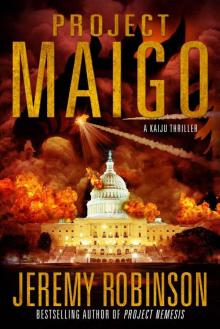 Project Maigo
Project Maigo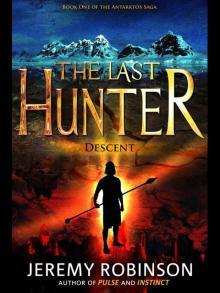 The Last Hunter - Descent (Book 1 of the Antarktos Saga)
The Last Hunter - Descent (Book 1 of the Antarktos Saga)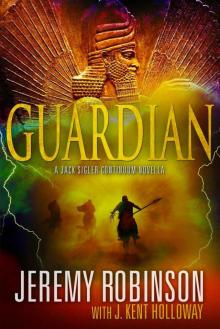 Jack Sigler Continuum 1: Guardian
Jack Sigler Continuum 1: Guardian Infinite
Infinite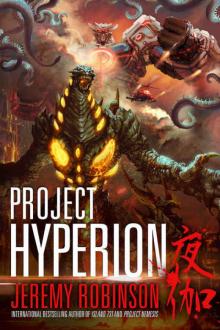 Project Hyperion
Project Hyperion The Distance
The Distance The Divide
The Divide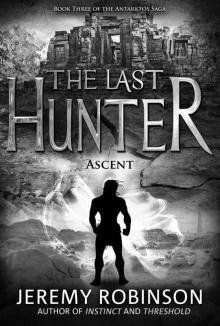 The Last Hunter - Ascent (Book 3 of the Antarktos Saga)
The Last Hunter - Ascent (Book 3 of the Antarktos Saga)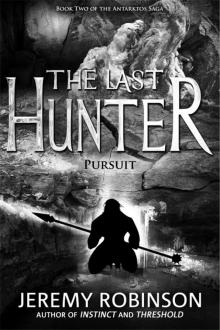 The Last Hunter - Pursuit (Book 2 of the Antarktos Saga)
The Last Hunter - Pursuit (Book 2 of the Antarktos Saga)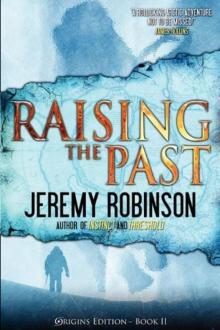 Raising the Past
Raising the Past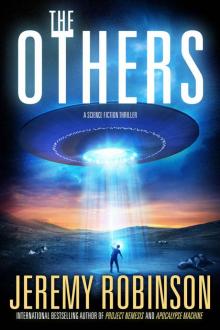 The Others
The Others The Last Hunter - Collected Edition
The Last Hunter - Collected Edition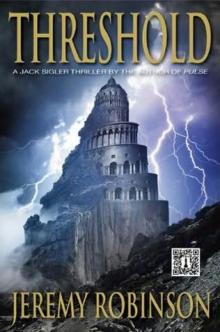 Threshold
Threshold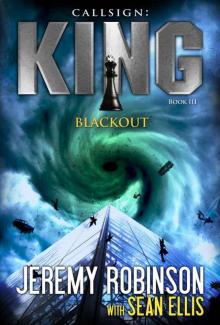 Blackout ck-3
Blackout ck-3 Antarktos Rising
Antarktos Rising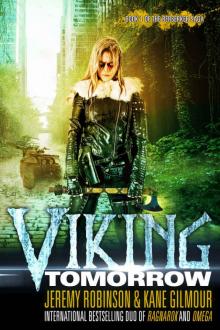 Viking Tomorrow (The Berserker Saga Book 1)
Viking Tomorrow (The Berserker Saga Book 1) The Didymus Contingency
The Didymus Contingency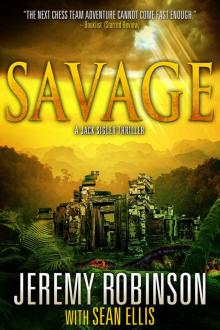 Savage (Jack Sigler / Chess Team)
Savage (Jack Sigler / Chess Team)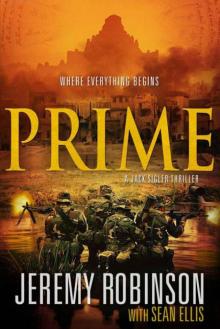 Prime
Prime Insomnia and Seven More Short Stories
Insomnia and Seven More Short Stories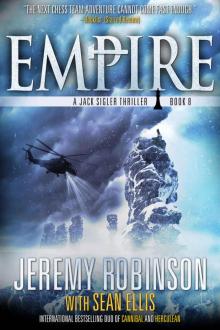 Empire (A Jack Sigler Thriller Book 8)
Empire (A Jack Sigler Thriller Book 8) Unity
Unity Instinct
Instinct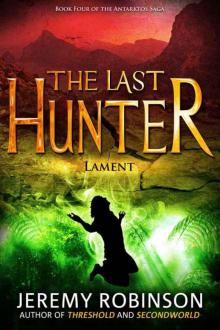 The Last Hunter - Lament (Book 4 of the Antarktos Saga)
The Last Hunter - Lament (Book 4 of the Antarktos Saga) MirrorWorld
MirrorWorld Herculean (Cerberus Group Book 1)
Herculean (Cerberus Group Book 1)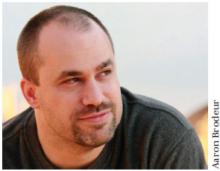 Island 731
Island 731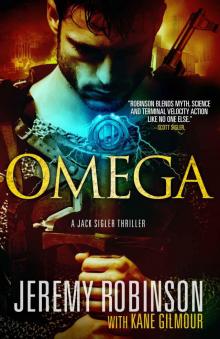 Omega: A Jack Sigler Thriller
Omega: A Jack Sigler Thriller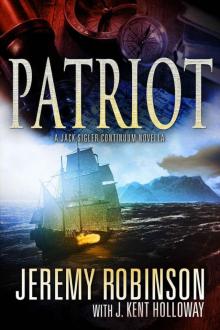 Patriot (A Jack Sigler Continuum Novella)
Patriot (A Jack Sigler Continuum Novella)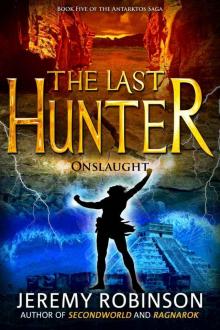 5 Onslaught
5 Onslaught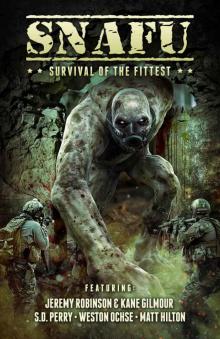 SNAFU: Survival of the Fittest
SNAFU: Survival of the Fittest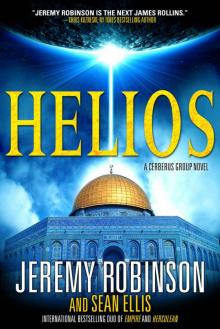 Helios (Cerberus Group Book 2)
Helios (Cerberus Group Book 2)